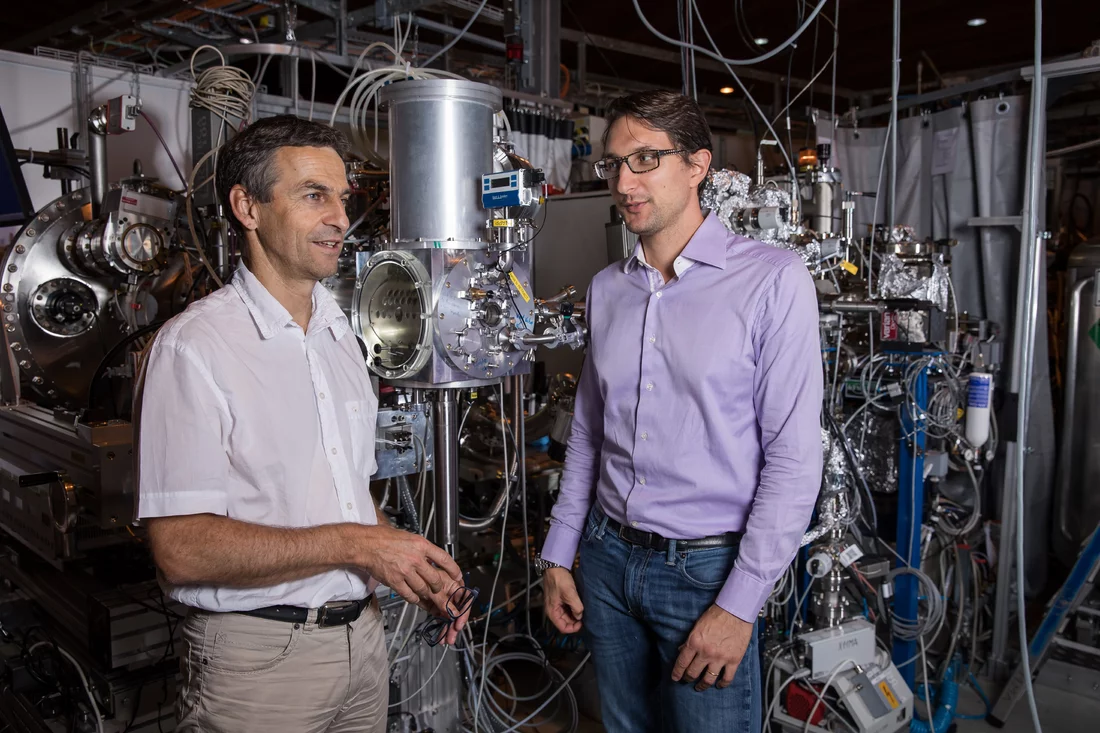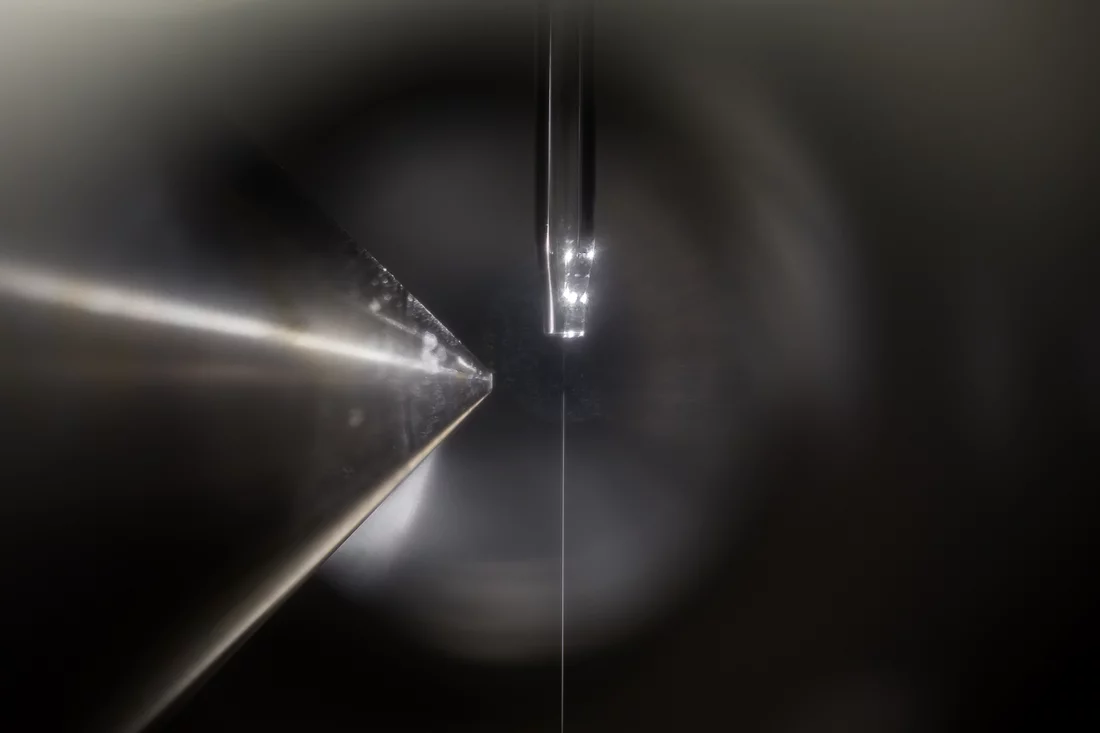Light from the particle accelerator helps to understand ozone decomposition
A new experimental chamber coupled to the Swiss Light Source (SLS), a large-scale research facility of the Paul Scherrer Institute PSI, allows researchers to recreate atmospheric processes in the laboratory through unprecedented precision analysis involving X-rays. In their first experiments, researchers detailed how bromine molecules are formed in the air. These play an essential role in the decomposition of ozone in the lower layers of the atmosphere. With their results, the researchers have also made an important contribution to models designed to explain and predict changes in climate and air composition. In the future, the experimental setup will be available to researchers in all scientific fields and those particularly concerned with the chemistry of the atmosphere or other topics in energy and environmental research.
Ozone in the upper atmosphere protects us from hazardous UV radiation. However, too much ozone in the air we breathe can endanger our health. Ideally and most frequently, the concentration of ozone in the lower layers of the atmosphere is safe and largely constant as long as summer smog is not prevalent. This is because the processes by which ozone is formed or decomposed keep things more or less in balance. To this end, bromine and related chemical elements such as chlorine and iodine in the air make an essential contribution to this balance. Globally, they are responsible for around 50% of all ozone decomposition.
Ozone, in turn, shares responsibility for the formation of bromine in the atmosphere. That's because bromine forms when bromide comes into contact with ozone from the air. This happens at the ocean's surface due the presence of bromide in seawater and also on the surface of small droplets (or particles) that arise from wave breaking and ocean spray. Since 70% of the Earth is covered with oceans, this happens globally on a massive scale. Recently, researchers at the Paul Scherrer Institute PSI have uncovered details of this important ozone-bromide chemical reaction. To do that, they recreated the processes at the water's surface and analysed them with the help of X-ray light from the Swiss Light Source SLS at PSI. Theoretical calculations carried out by researchers at institutions in Switzerland, the USA, and Qatar helped in interpreting the measurements.
Research options that are unique worldwide
SLS is a large-scale research facility that generates especially intense X-ray light customised to the exact requirements of different experiments. The centerpiece of the facility is a ring-like electron accelerator 288 metres in circumference. With the X-ray light from SLS, individual substances can be accurately detected even when they are in existence for only a very short time. We were able to show that a compound of bromide and ozone is created for a short time during the chemical reaction at the surface of the water, which had been predicted from theory but has been impossible to observe until now
, says Luca Artiglia, the scientist responsible for the experiment. Markus Ammann, Head of the Surface Chemistry Research Group at PSI explains, These results not only help to understand the bromine chemistry in the atmosphere, but they also will be integrated into future atmospheric models to understand the development of the climate and air composition
. At the same time, they show that the one of a kind experimental chamber constructed by the PSI researchers really does make anticipated chemical insight an observable reality. In the future, the chamber will be available to other researchers who study processes on surfaces in the context of energy and environmental research
, Artiglia points out.
Text: Paul Scherrer Institute/Paul Piwnicki
The new experimental chamber in detail
The special challenge in setting up the experiment is that the sample need to be in a vacuum, while on the other hand water in a vacuum inevitably evaporates, and the water vapour spreads out. In other words, a vacuum really is incompatible with the investigation of water and air. In order to maintain a water sample in vacuum, researchers had to develop a technical compromise.First, X-rays were used in a method known as photoelectron emission spectroscopy, in which X-ray light from the SLS first knocks individual electrons out of the sample. Then, the ejected electrons are recorded by a detector. It is important to ensure that the electrons do not collide with air molecules on their way to the detector. In their experiment, the researchers set the energy of the X-ray light used to a particular value and analysed how the number of electrons knocked out was correlated to their speed. Since electrons in different substances are bound with different strengths, this makes it possible to determine which substances the sample contains.
Because only electrons from a depth of a few nanometres (millionths of a millimetre) can be measured, the method is very sensitive to the chemical composition of the surface, Ammann adds.
In our experiment, we start with a liquid of water and dissolved bromide. We make this liquid stream through our experimental chamber as a thin jet one ten-thousandth of a millimetre wide at a speed of 100 metres per second! That is so fast that the water hardly has time to evaporate", Artiglia explains. "Then we wrap the jet with a stream of ozone laden air. In this way, we probe the same chemical reactions that take place at the sea surface or on particulates that come from the ocean.Immediately after the X-ray light from SLS hits the water jet, the detector records exactly which substances have been formed at the water's surface.
About PSI
The Paul Scherrer Institute PSI develops, builds and operates large, complex research facilities and makes them available to the national and international research community. The institute's own key research priorities are in the fields of matter and materials, energy and environment and human health. PSI is committed to the training of future generations. Therefore about one quarter of our staff are post-docs, post-graduates or apprentices. Altogether PSI employs 2100 people, thus being the largest research institute in Switzerland. The annual budget amounts to approximately CHF 380 million. PSI is part of the ETH Domain, with the other members being the two Swiss Federal Institutes of Technology, ETH Zurich and EPFL Lausanne, as well as Eawag (Swiss Federal Institute of Aquatic Science and Technology), Empa (Swiss Federal Laboratories for Materials Science and Technology) and WSL (Swiss Federal Institute for Forest, Snow and Landscape Research).
(Last updated in May 2017)
Contact
Prof. Dr. Markus AmmannHead of the Surface Chemistry Research Group
Paul Scherrer Institute PSI, 5232 Villigen PSI, Switzerland
Telephone: +41 56 310 4049; E-mail: markus.ammann@psi.ch
Original Publication
A surface-stabilized ozonide triggers bromide oxidation at the aqueous solution-vapour interfaceLuca Artiglia, Jacinta Edebeli, Fabrizio Orlando, Shuzhen Chen, Ming-Tao Lee, Pablo Corral Arroyo, Anina Gilgen, Thorsten Bartels-Rausch, Armin Kleibert, Mario Vazdar, Marcelo Andres Carignano, Joseph S. Francisco, Paul B. Shepson, Ivan Gladich, and Markus Ammann
Nature Communications
DOI: 10.1038/s41467-017-00823-x


